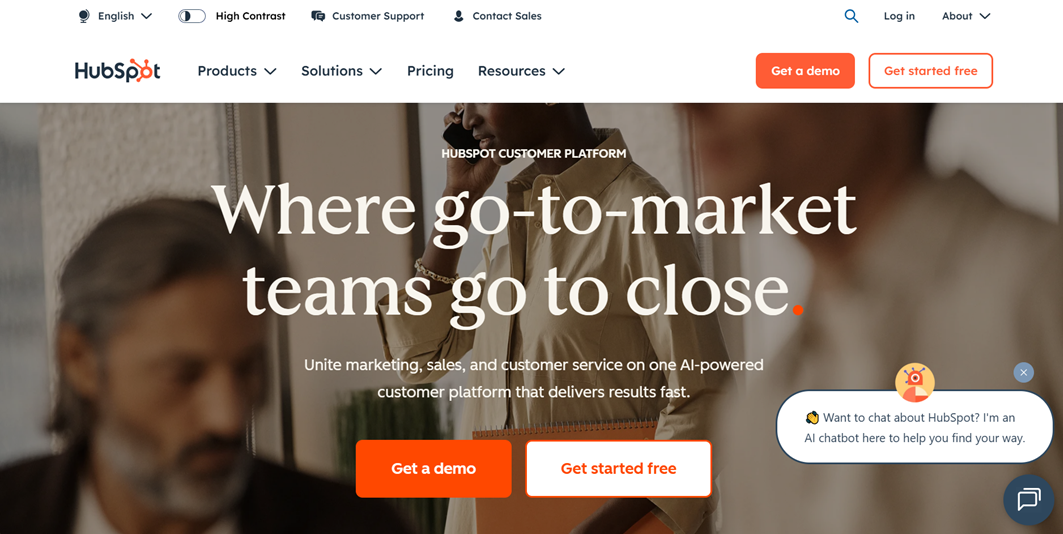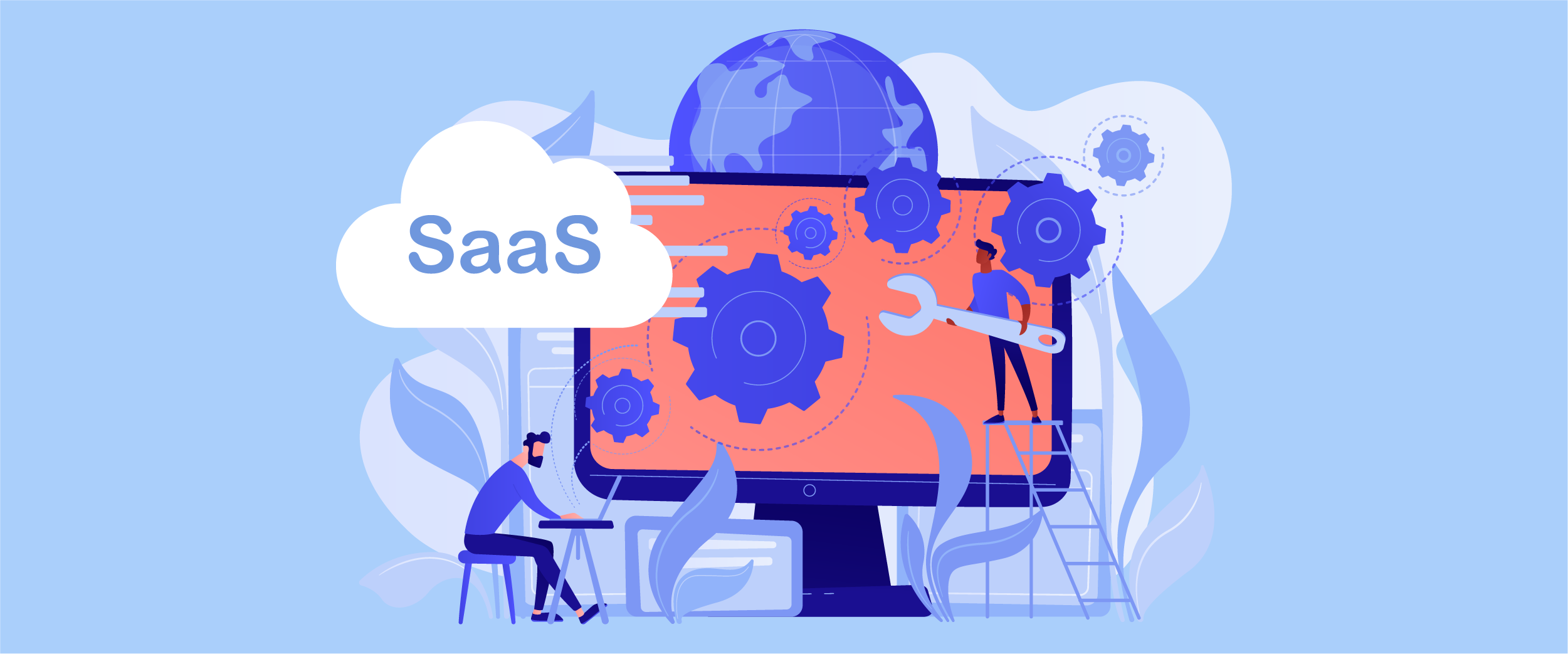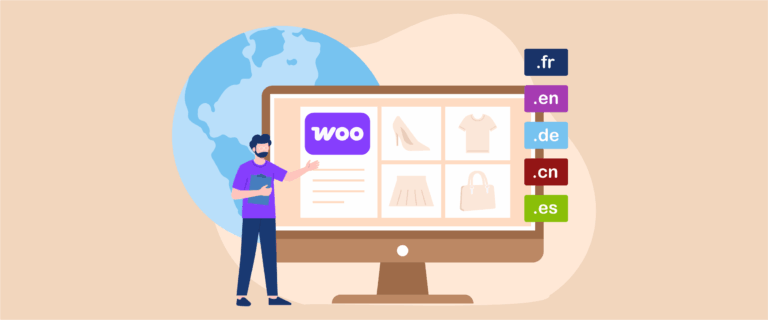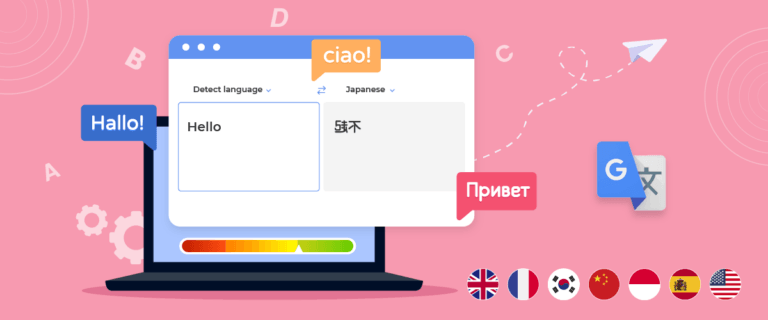SaaS internationalization (i18n) is the key to making your platform feel native in every country, ensuring that users across different regions can engage seamlessly. It goes beyond simple translation, adapting your application to fit local languages, currencies, and cultural expectations, while ensuring compliance with regional regulations. For SaaS platforms, this process transforms a product designed for one market into an experience that feels native everywhere.
Implementing internationalization effectively requires a structured technical approach. From designing the exemplary architecture and preparing databases to setting up translation workflows and adjusting user interfaces, each step ensures your SaaS platform is ready for international users. This guide will walk you through a step-by-step process of SaaS platform internationalization. Let’s start!
Why internationalization matters for SaaS platforms?

Internationalization is an essential strategic step for SaaS platforms that want to expand into the global market. Without proper adaptation to local needs, companies risk missing out on tremendous opportunities. For example, the global SaaS market is expected to reach USD 1,131.52 billion by 2032, growing at an annual rate of 20%. However, to realize this potential, SaaS platforms must be able to adapt to various languages, cultures, and local regulations.
This is about tailoring the user experience to local languages, cultures, and regulations. With this approach, companies can enhance user satisfaction, build trust, and significantly expand their market share.
Additionally, internationalization helps SaaS maintain brand consistency across regions while remaining flexible to local needs. Platforms designed with internationalization principles can be more easily scaled and adapted when entering new markets, supporting long-term growth and global competitiveness.
Key challenges in preparing for SaaS internationalization

Internationalizing a SaaS platform brings many opportunities, but it also comes with challenges that must be anticipated early. Identifying and understanding these obstacles helps teams plan more effectively and avoid issues when expanding into global markets.
1. Language and accurate translation
One of the main challenges is ensuring that the app’s text, interface, and content are translated accurately and in a culturally sensitive manner. Literal translations are often not enough; phrases, idioms, or technical terms must be adapted so that users fully understand their meaning.
Mistakes in translation can lead to confusion, poor user experience, and even a loss of trust in the platform. Therefore, it’s essential to use internationalization (i18n) standards and involve language experts or native speakers to review translated content.
2. Local regulations and compliance
Every country has different regulations and legal requirements regarding data, privacy, and digital transactions. Ignoring these rules can result in heavy fines or even operational bans.
SaaS platforms need to adjust data storage, security measures, and legal compliance to meet local regulations. This includes GDPR in Europe, CCPA in the United States, and privacy laws in Southeast Asia.
3. User interface & user experience adaptation
The app’s layout and navigation must be flexible to support different languages and cultures. For example, Arabic or Hebrew text requires right-to-left layouts, while English or Japanese uses left-to-right layouts.
Besides text direction, design elements such as colors, icons, and illustrations must also be adjusted to match local preferences. Poorly adapted UX can make users uncomfortable and reduce platform adoption.
4. Global infrastructure and performance
A SaaS platform serving international users must handle requests from different locations efficiently. Slow connections or frequently down servers can ruin the user experience.
Using Content Delivery Networks (CDNs), regional servers, and performance optimization is crucial to maintain speed and reliability. A robust infrastructure supports global expansion without compromising service quality.
5. Team coordination and internal processes
International expansion requires cross-team collaboration, including developers, designers, QA teams, and language experts. Lack of coordination can lead to mistakes in implementing internationalization.
Establishing clear workflows, consistent documentation, and effective communication between teams makes it easier to integrate new features, update content, and perform testing before launching the platform in new markets.
Step-by-step SaaS platform internationalization

Internationalizing a SaaS platform requires designing a system that can seamlessly support multiple languages, currencies, formats, and regional regulations. The following steps guide software engineers and product managers in preparing a SaaS platform for global markets.
Step 1: Designing the exemplary architecture
Designing a flexible and scalable architecture is the foundation of SaaS internationalization. The system should separate core logic from locale-specific features, making it easy to add multiple languages, currencies, or regional functionalities without disrupting existing services. Consider isolating region-sensitive domains (pricing, tax, payments, compliance) as dedicated services and using feature flags to roll out locale/region variants safely.
Choosing the proper platform structure monolithic or microservices depends on the team’s needs, but modular designs or feature flags are highly effective for managing localized features. If you support multiple regions or tenants, plan multi-tenant data isolation and potential regional sharding to satisfy data residency and latency goals.
API-driven approaches further simplify integration with translation systems and third-party services. Storing locale preferences in user profiles and designing endpoints that can return content in the requested language or format ensures consistency across devices and applications. At the same time, multi-tenant architecture supports service deployment across multiple countries. Ensure APIs accept headers like Accept-Language, a currency override, and timezone hints, and consider edge functions/CDN geolocation for locale negotiation and smart redirects.
Step 2: Preparing the database for global use

A solid database design is fundamental for SaaS platforms looking to expand globally. It requires structuring your data to support multiple languages, time zones, and character sets without causing performance issues.
For example, choosing UTF-8 encoding ensures that characters from Asian, European, and Middle Eastern languages can all be stored and retrieved accurately. Additionally, date and time values should be stored in a standardized format, such as UTC, to avoid confusion when displaying information across regions. Prefer storing the user’s IANA timezone (e.g., Asia/Jakarta) for rendering.
Another important aspect is handling currencies and formats. Different markets expect familiar ways of viewing monetary values, numbers, and dates. Your database should be flexible enough to store numeric values in a neutral, standardized form (e.g., using ISO currency codes and decimal formats) while allowing the application layer to render them according to local expectations. Store money in minor units (integers) with an accompanying ISO-4217 code, and version your exchange rates with timestamps and rounding rules.
Use locale-aware collations for sorting/search, language-specific analyzers (e.g., CJK tokenization), and normalize addresses/phones with standard libraries. For example, $1,000.50 in the U.S. is written as €1.000,50 in Germany. Failing to adjust these details can lead to misunderstandings, errors in transactions, or even loss of user trust.
Step 3: Develop internationalization standards
Clear i18n standards guide developers, testing teams, and translators in handling localization consistently. This includes naming conventions for keys, file structures for resource bundles, and guidelines for formatting dates, numbers, and currencies.
Best coding practices, such as avoiding hard-coded strings and using frameworks or libraries that support i18n, ensure consistency across the codebase. A standardized approach reduces errors, accelerates translation workflows, simplifies testing, and streamlines deployment.
Step 4: Setting up translation workflows

Translation workflows should be integrated directly with development pipelines to ensure updates are consistently localized. Connecting to a Translation Management System (TMS) allows translators, editors, and developers to collaborate efficiently. This integration ensures that whenever new features or content are released, translations follow seamlessly without delays.
Special attention must be given to dynamic and user-generated content, as these elements change frequently and require continuous translation updates. In this context, solutions like Linguise translation service can be highly valuable. Linguise offers real-time AI-powered translations combined with human editing, ensuring accuracy without slowing down the release cycle. It also supports advanced features such as automatic updates, SEO-friendly translations, and easy integration with SaaS platforms.
By adopting such a service, SaaS companies can streamline their translation process, reduce manual overhead, and deliver a consistent multilingual experience to users worldwide.
Step 5: Adjusting the user interface

Designing the user interface (UI) for internationalization means creating layouts and components that can flexibly adapt to different languages and cultural norms without requiring redesigns for each locale. For example, some languages expand text significantly (like German), while others are more compact (like Chinese). A responsive and fluid UI ensures these variations don’t break the layout or harm usability.
Another key aspect is preparing the UI to handle local conventions for formats such as currencies, dates, and numbers. Even if values are stored consistently in the backend, the interface should render them appropriately for each locale, for instance, ¥5,000 in Japan, €5.000 in Germany, or $5,000 in the U.S. Designing this flexibility at the internationalization stage makes it easier to scale globally.
Finally, internationalization requires anticipating structural differences such as Right-to-Left (RTL) scripts (Arabic, Hebrew). The UI framework should support mirrored layouts, navigation repositioning, and proper text alignment. Building this capability upfront ensures smoother localization later and prevents usability issues when expanding into RTL regions.
Step 6: Adding regional and compliance features

Internationalization goes beyond language, it must also anticipate regional laws, regulations, and financial practices, instead of coding compliance rules directly into features, design systems that can adapt to diverse requirements such as GDPR, CCPA, or other regional privacy standards. This means building configurable modules for consent tracking, data retention, residency, and export, so that new regions can be onboarded without rewriting core logic.
For financial flows, support extensible payment gateways and tax engines that can handle VAT, GST, or region-specific methods (e.g., iDEAL, PIX, UPI, Konbini). Keep these configurable rather than hardcoded, allowing rapid adoption of new payment rails as you expand globally. A multi-tenant approach combined with regional sharding ensures compliance with residency rules while maintaining performance across regions.
Finally, centralize compliance settings and error handling in a config-driven model. Localized consent forms, error messages, and notifications should be delivered consistently via APIs or services, ensuring both backend logic and frontend presentation stay aligned. This not only enforces legal obligations but also builds user trust through transparency and consistent compliance behavior across regions.
Step 7: Ensuring quality with testing
Internationalization testing ensures that the SaaS platform functions correctly across different languages, regions, and cultural settings. Automated tests play a crucial role in catching locale-specific issues early. For example, pseudo-localization helps simulate translated text to identify UI overflow or truncation problems before actual translation. Additionally, automated unit tests for formatters (dates, currencies, numbers), contract tests for Accept-Language and currency handling, as well as per-locale snapshot tests for message catalogs, help maintain accuracy and consistency across regions.
Beyond automation, manual testing is equally important for verifying translation quality, cultural appropriateness, and user experience. Test cases should include variations in time zones, currency formats, and workflows across different locales. Visual regression testing helps ensure UI integrity in both LTR and RTL scripts, while geo-spoofing validates payment, tax, and compliance flows for each region. Finally, incorporating linguistic quality assurance (LQA) by native speakers on high-traffic areas ensures that translations resonate with local users and support a truly global experience.
Step 8: Scaling and deployment
Scaling a global SaaS platform requires a distributed infrastructure to minimize latency and guarantee reliability for users across regions. Leveraging Content Delivery Networks (CDNs), multi-region cloud deployments, and edge servers ensures that content is delivered quickly and consistently, regardless of geographic location. This setup also reduces downtime risks and improves resilience in high-demand markets.
Deployment workflows should be designed to support continuous integration alongside internationalization pipelines. This allows new languages, regional settings, or compliance rules to be rolled out seamlessly without service interruptions. Ongoing monitoring and analytics play a critical role in detecting performance bottlenecks, tracking per-locale usage, and optimizing resource allocation. Together, these practices ensure that international users receive a stable, high-performance experience tailored to their region.
Step 9: Optimizing multilingual SEO
Internationalization isn’t complete without ensuring that users across different regions can discover your SaaS platform. Multilingual SEO involves adapting your website’s structure and content so search engines can correctly index and display it in multiple languages. This includes implementing hreflang tags, optimizing translated metadata (titles, descriptions, alt texts), and ensuring that each localized page has a clear, crawlable URL structure. Without these practices, even the best translations may go unnoticed by your target audience.
Beyond technical setup, SEO should also consider cultural nuances in how people search online. For example, keywords in one language may not directly translate into commonly searched terms in another. This means keyword research needs to be done natively in each market to capture real user intent. By combining technical optimization with localized keyword strategy, your SaaS product can achieve higher visibility, attract more qualified traffic, and strengthen its global presence.
Case study from Global SaaS companies

Expanding into global markets requires building a system that can scale seamlessly across languages, regions, and user expectations. By looking at real-world examples from leading SaaS companies, we can see how internationalization (i18n) strategies directly impact scalability, usability, and revenue growth.
HubSpot

HubSpot recognized early on that a global SaaS platform needs to scale seamlessly across languages and regions. By adopting an API-first architecture, they centralized content delivery and localization, allowing fast integration with translation platforms. This approach ensured smooth scaling into international markets while maintaining a consistent user experience.
HubSpot wanted to expand quickly into new markets while offering a consistent, localized user experience in more than 25 languages. However, scaling at this speed was difficult without a strong internationalization strategy.
Before i18n implementation:
Localization efforts mainly were manual. Each new market launch required heavy engineering involvement to adapt the UI and content, which delayed time-to-market and created inefficiencies in the process.
Strategy:
HubSpot restructured its system around APIs, delivering both UI and content through a centralized framework. Translation support was layered directly into these APIs, which meant localization logic no longer depended on individual developers. Regional onboarding became automated, and integrations with translation management systems were streamlined.
After i18n implementation:
With internationalization in place, HubSpot accelerated global launches, significantly reducing time-to-market. They were able to localize quickly, provide a consistent user experience worldwide, and scale into new regions with minimal engineering overhead. This shift contributed directly to their international revenue growth.
Shopify

Shopify built its SaaS commerce platform with international markets in mind. From the start, they focused on making both the storefront and admin panel multilingual, using RESTful APIs to manage language and currency dynamically. This API-first internationalization approach enabled merchants to serve customers worldwide without complex technical work.
Shopify needed to support millions of merchants who wanted their storefronts in local languages and currencies. The main challenge was ensuring a smooth global shopping experience while keeping the platform flexible and scalable.
Before i18n implementation:
Localization was fragmented and heavily tied to front-end code. Merchants had limited flexibility, and maintaining language or currency support required significant customization, which made global expansion challenging.
Strategy:
Shopify centralizes language and currency settings within its API-driven architecture. Merchants could now select preferred languages and currencies at either the store or admin level. The platform handled localization logic centrally, which made it easier to scale without requiring manual front-end adjustments.
After i18n implementation:
This API-first internationalization model allowed Shopify to unlock billions in global revenue. Merchants could instantly reach international customers with localized storefronts, while Shopify maintained consistency and scalability across its ecosystem. The result was a seamless, multilingual shopping experience worldwide.
Conclusion
Internationalization in SaaS is a strategic foundation that empowers platforms to scale globally while ensuring seamless, localized, and user-friendly experiences for diverse markets. By implementing internationalization early, SaaS companies avoid costly retrofits and position themselves to expand seamlessly into new markets, unlocking scalability and long-term competitiveness.
For teams ready to simplify translation and accelerate their i18n journey, try Linguise translation for real-time, SEO-friendly, and easily integrable multilingual support. Leveraging such tools ensures SaaS platforms can focus on innovation while delivering localized, high-quality experiences that win global users’ trust.




